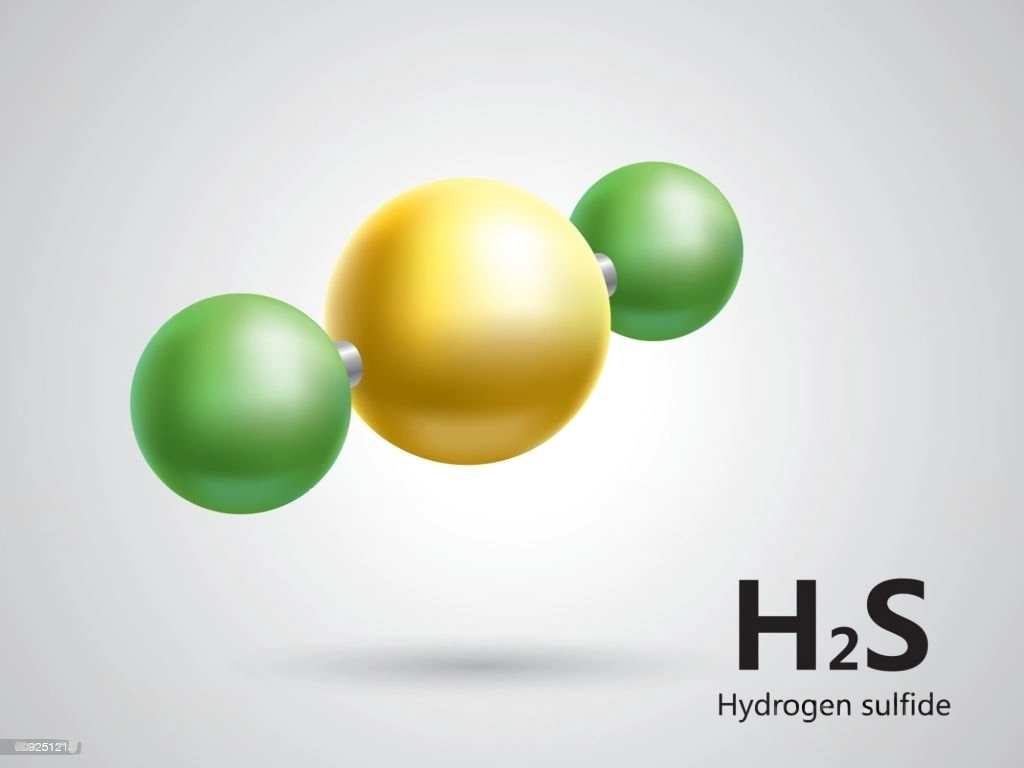Our environment is a complex web of interactions. Certain elements, while seemingly inconspicuous, can wield considerable impact on this vast interconnected system. Hydrogen Sulfide, abbreviated as H2S, is one such silent actor. Famously known for its rotten egg odour, its presence in the environment is more than just a simple nuisance. Understanding H2S is crucial for industrialists and laypeople, given the potential health risks it poses.
Explanation About H2S
Hydrogen Sulfide is a naturally occurring compound but can also be a by-product of industrial processes. It’s a colourless gas, and even though it’s detectable by its smell at low concentrations, that detection becomes impossible at higher levels due to olfactory fatigue. Essentially, our nose becomes desensitised. For instance, imagine living near a landfill and getting used to its distinct smell over time. It’s a similar concept but with potentially dangerous consequences if H2S concentrations rise.
H2S a Toxic Gas with Rotten Egg Like Smell
The smell of H2S is its most notable trait for the average person. The sharp, pungent odour that reminds one of rotten eggs is distinctive and hard to ignore. For example, residents living near wetlands or sewage treatment plants might sometimes detect this smell, especially when the wind direction changes. This scent serves as a natural warning sign, indicating the presence of H2S. However, relying solely on it can be deceptive, as, at high concentrations, it becomes undetectable.
Importance of Understanding H2S Due to Its Toxicity
The toxicity of H2S is a significant concern. For instance, in 2014, there were reports of workers in the oil and gas industry in the U.S. succumbing to sudden exposure to high levels of H2S. Such incidents highlight the importance of understanding and respecting the potential dangers of this gas. It’s not merely an occupational hazard for people in certain industries but can also pose risks to communities living near natural or industrial sources of H2S.
Chemical Properties of H2S
As a chemical, H2S presents some intriguing characteristics. It is denser than air, meaning it will settle in low-lying areas and can thus pose significant dangers in basements, pits, and other such locations. For instance, in poorly ventilated cellars of old houses, if there’s a minor leak or natural production, H2S can accumulate and present a significant health risk. Its tendency to react with metals means it can cause corrosion, especially in pipelines carrying sour crude oil with high H2S content.
Natural Occurrence of H2S
Nature is a primary source of H2S. From the depths of marshy lands, where organic material decomposes without oxygen, to the fumaroles of volcanoes, H2S is released in various natural processes. For example, residents near the Salton Sea in California often report strong odours, especially after seismic activity, due to the release of H2S from below the Earth’s surface.
Industrial Production and Uses
In the industrial realm, H2S is both a problem and an asset. During the refining process of crude oil, H2S is often separated and can be further processed to produce elemental sulphur – a key raw material for many industries. In Alberta, Canada’s oil sands, for example, companies have to manage the H2S released during extraction and harness it for the production of sulphur.
Health Effects and Toxicity of H2S
Breathing, even a small amount of H2S, can irritate the eyes and throat. As an example, in larger cities with ageing sewage systems, there are instances where H2S buildup in home plumbing can lead to noticeable symptoms among residents. Chronic exposure, especially in occupational settings, can have long-term health implications, affecting the nervous system and even leading to death in extreme cases.
Safety Precautions
Recognising the hazardous potential of H2S, industries and individuals alike must be armed with the right precautions.
Continuous monitoring is vital for industries, especially those involved in oil extraction, wastewater treatment, and other H2S-releasing processes. For instance, one can do regular hourly checks to detect any traces of H2S. Moreover, workers should be trained to recognise early symptoms of H2S exposure, such as eye irritations, cough, and shortness of breath.
Like those developed by Oizom, air quality monitors play a critical role here. They offer real-time data on H2S levels, enabling industries to take swift action. The immediacy of these results could mean the difference between a minor incident and a significant catastrophe.
On an individual level, investing in personal air quality monitors might be wise if someone resides near industries or natural sources of H2S. Also, awareness of the rotten egg smell and retreating from such an environment while alerting authorities can mitigate risks.
Regulations and Guidelines
Given the multifaceted dangers H2S poses, global and regional regulatory bodies have established guidelines to manage its presence.
- Overview of Regulatory Bodies and Standards Related to H2S
Internationally recognised bodies like the Occupational Safety and Health Administration (OSHA) in the U.S., the World Health Organisation (WHO), and the UK’s Health and Safety Executive (HSE) provide standards for permissible H2S exposure levels. For example, OSHA has set a permissible exposure limit (PEL) for H2S at 20 ppm and should not exceed anytime over an 8-hour workday.
Furthermore, organisations such as the International Labour Organization have recommendations on safety procedures when working in environments where H2S could be present.
- Legal Requirements for Workplaces Handling H2S
For industries, the mandate is clear: protect your workers and the surrounding environment. This includes training workers about potential H2S dangers, providing personal protective equipment (PPE) like masks and respirators, and regularly conducting drills for emergency evacuation.
In an illustrative case from 2017, a company in the UK was fined heavily when it was found that their safety measures against H2S exposure were inadequate, leading to several workers falling ill.
Conclusion
Hydrogen Sulfide, a compound with such humble origins in nature, has extensive implications for our environment, industries, and health. Whether from a decaying marshland or an expansive refinery, its ubiquitous nature means that awareness and vigilance are our primary tools against its potential harm.
Modern technological solutions, especially air quality monitoring tools to monitoring H2, have become essential in this battle. They provide industries with the means to comply with regulations and empower individuals to ensure their surroundings are safe.
In our journey towards a sustainable future, understanding and addressing the challenges posed by compounds like H2S will pave the way for a safer, cleaner world.
To ensure the safety and well-being of your workforce and surroundings, consider investing in Oizom’s range of air quality monitors. Their state-of-the-art technology provides accurate, real-time data, enabling proactive measures against harmful pollutants like H2S.






